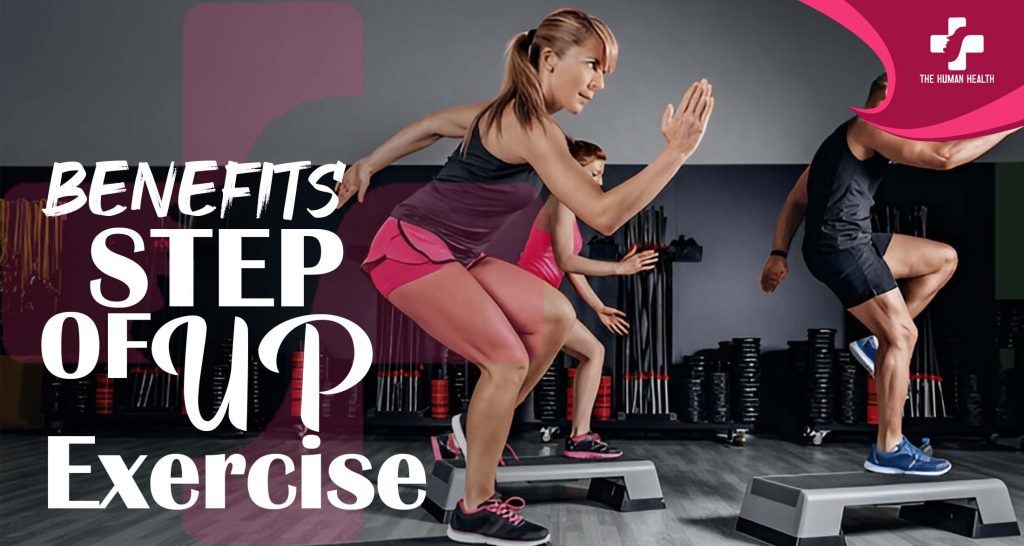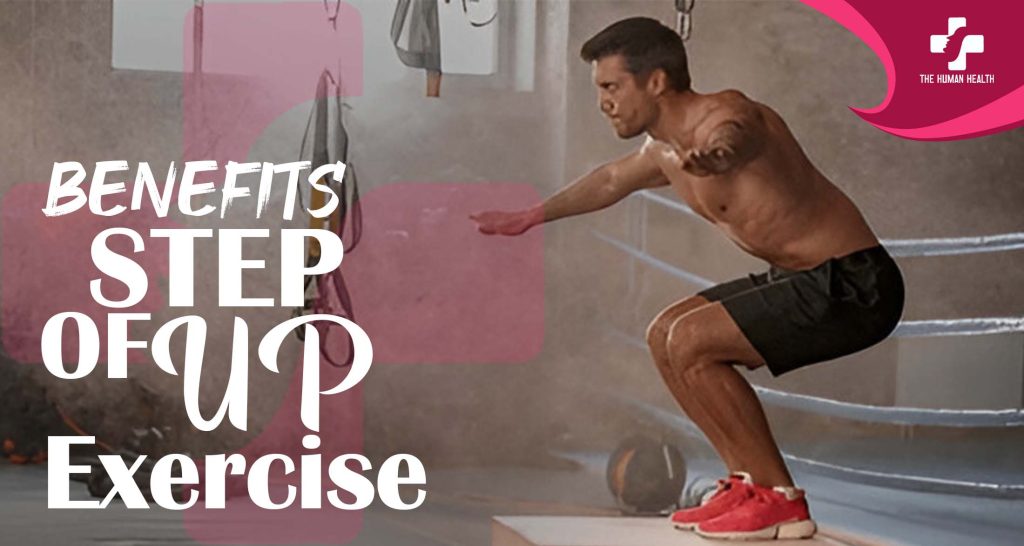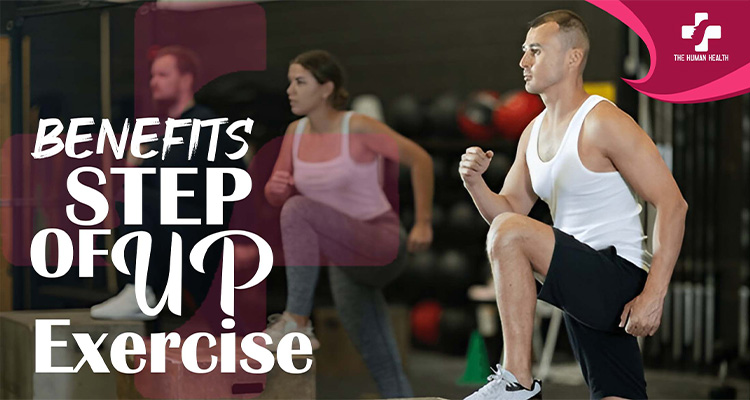Introduction
Ever feel like getting in shape has to be complicated? I used to think that too—until I discovered the surprising benefits of step up exercise. This one simple move, using just a sturdy box or step, helped me build strength,
tone my legs, and even boost my balance—all without fancy machines or a gym membership. As someone who’s tried every trending workout out there, I can honestly say step up exercises are underrated but incredibly effective.
In this guide, I’ll walk you through how they work, what muscles they target, and why they’re perfect for beginners. Ready to give your glutes and legs some love? Let’s step up—literally!
Section 1: What is a Step Up Exercise?
If you’ve ever walked up stairs, you’ve done a step up. It’s that simple. A step up exercise means stepping onto something—like a box or stair—and then stepping back down. You do it one leg at a time. That’s it. But don’t be fooled by how easy it sounds.
You can do step up exercises almost anywhere. At home, I’ve used a low stair or even a strong crate. At the gym, there’s usually a step up exercise box or platform made just for this. As long as it’s solid and doesn’t move, it works.
The best part? Step ups fit any level. You can do them with no gear or add weight later. I like to hold dumbbells when I want more of a burn. A step up exerciser makes it easy to change the height too.
This move trains your body for real life—like climbing stairs or hiking. It’s simple, safe, and great for your legs and core. It’s one of my go-to moves when I want results without stress.

Section 2: Are Step Ups a Good Exercise? (Yes—and Here’s Why)
Yes, step ups are a great exercise. I started doing them to shape my legs, but they helped with so much more. My balance got better. My core felt stronger. And I didn’t need a gym to do them.
Step ups are a compound exercise, which means they work many muscles at once. You use your legs, your core, and even your arms if you hold weights. That’s a big win if you want to get stronger fast.
They also help with real-life moves. Going up stairs, walking uphill, or playing with your kids—it all feels easier. Step ups are good exercise because they build both strength and balance at the same time.
Wondering are step ups a good exercise or are step ups good exercise for beginners? Totally. They’re simple, smart, and easy to fit into any routine. Not sure if step ups are a compound exercise or isolation exercise? They’re compound—and that’s why they work so well.
Section 3: Muscles Worked During a Step Up
When I first did step ups, my legs were sore the next day. But in the best way! That’s how I knew they were working.
So, what is a step up exercise good for? It hits many muscles at once. Here’s what gets stronger:
- Quads – These lift your body as you step up.
- Hamstrings – These help you move smooth and strong.
- Glutes – These give you power and shape your butt.
- Calves – These support each step and help with balance.
- Core – Your abs help you stay steady and upright.
People often ask, “Step ups work what muscles?” The answer? A lot! That’s why I love this move.
And if your goal is to grow your glutes, step ups are gold. I saw real change when I added dumbbell step-ups or weighted step ups. The step up for glutes is no joke—it’s one of my favorites for that reason.

Section 4: Top Benefits of Step Up Exercise
When I first tried step ups, I didn’t expect much. The move seemed too easy. But soon, I noticed real changes. My legs got stronger, my balance improved, and I felt more confident. Here’s why step ups work so well:
✅ Builds Strength and Muscle
Step ups work your legs, glutes, and core. They help you build muscle without needing machines. I saw my legs tone up, and my glutes got firmer. If you want more of a challenge, try weighted step ups or dumbbell step-ups. Adding weight makes a big difference.
✅ Boosts Balance and Coordination
Before step ups, I had trouble with balance. Now, I feel more steady. Step ups train each leg to work on its own. This improves your overall balance. Whether you’re walking on uneven ground or playing with kids, you’ll feel more in control. It’s one of the best benefits of step up and down exercise.
✅ Great for Glute Activation
Step ups are amazing for your glutes. They target this area better than many other exercises. After a few weeks, I noticed a real difference. Adding dumbbells makes it even better. If you’re looking for a step up for glutes, this move should be in your routine.
✅ Easy on the Joints
Some exercises can hurt your knees or hips. Step ups don’t have that problem. They are gentle on your joints. You can adjust the height and speed to match your level. Even if you’re recovering from an injury, step ups exercise is a good choice.
✅ Helps with Everyday Movement
Step ups mimic movements you do every day—like climbing stairs or walking uphill. They train your body for these actions. That’s why the benefits of high step up exercise go beyond the gym. It makes everyday tasks feel easier.
Section 5: Step Up Variations for All Levels
Want to keep your workouts fun and effective? Step up variations are the way to go! Whether you’re new to fitness or looking for a challenge, there’s a step up exercise that’s perfect for you. These moves strengthen your legs and glutes while keeping your routine exciting. Let’s dive in!
1. Basic Step Ups
If you’re just starting out, basic step ups are a great choice. They help you get the movement right and build strength. Here’s how to do them:
- Find a step: Use something sturdy, like a low step, box, or a staircase.
- Step up: Put one foot on the surface, push through your heel, and lift your body. Bring the other foot up.
- Step down: Lower one foot at a time back to the ground.
Tip: Keep your back straight and tighten your core to stay steady. This simple move is a great start to enjoying the benefits of step up exercises.
2. High Step Ups
Ready to kick it up a notch? High step ups are tougher and target your muscles more deeply.
- Pick a higher surface: Use a box or bench about knee height.
- Step up carefully: Push through your heel to lift yourself up. Tighten your core for balance.
- Step down slowly: Control your movements to avoid injury.
Why It Works: High step ups are awesome for shaping your glutes. Just make sure your surface doesn’t wobble.
3. Dumbbell Step-Ups
Want more of a challenge? Add weights with dumbbell step-ups.
- Grab some dumbbells: Hold one in each hand. Start light to keep good form.
- Do the step up: Step onto your surface as usual, holding the weights by your sides.
- Stay steady: Don’t let the weights swing around.
Bonus: Dumbbells turn this into a full-body workout. Your arms and legs will feel the burn.
4. Weighted Step Ups
If you’re ready for the next level, weighted step ups are for you. They’re similar to dumbbell step-ups but with more ways to add weight.
- Try different tools: Use a barbell on your shoulders, a weighted vest, or kettlebells.
- Focus on form: Extra weight makes good form even more important. Take your time.
Pro Tip: Weighted step ups build strength fast. They’re also perfect if you want to target your glutes.
Quick Guide to Variations
- Basic Step Ups: Great for beginners, no gear needed.
- High Step Ups: Builds strength and focuses on glutes.
- Dumbbell Step-Ups: Adds resistance for a tougher workout.
- Weighted Step Ups: Helps you build serious muscle.
With these step up variations, there’s something for everyone. Mix them up to keep your workouts fresh and effective. Your legs and glutes will get stronger and more toned with each step!

Section 6: How to Do Step Ups Safely
Step ups are simple, but doing them right keeps you safe and gets the best results. Here’s how to master them:
Easy-to-Follow Instructions
- Pick the Right Surface: Use a sturdy, non-slip platform like a step, bench, or exercise box.
- Start With Good Posture: Stand tall, shoulders back, and core tight. Look straight ahead.
- Step Up Smoothly: Place your whole foot on the surface. Push through your heel to lift up. No bouncing or jerking.
- Step Down Carefully: Lower one foot at a time. Take it slow to prevent strain.
Tips for Form and Avoiding Injury
- Don’t Overreach: Keep the platform height just below your knee.
- Engage Your Core: Tighten your abs to stay balanced and protect your back.
- Keep Knees Soft: Don’t lock your knees; a slight bend helps.
- Align Your Knee and Toe: Make sure your knee doesn’t cave inward.
When to Progress or Add Weight
- Master the Basics First: Once you can do 12–15 reps with good form, move on.
- Raise the Height: Use a higher platform to challenge yourself.
- Add Weight: Try dumbbells, a weighted vest, or a barbell.
- Mix It Up: Include high or weighted step ups to keep things exciting.
Optional Gear to Try
- Step Up Exercise Box: Adjustable boxes let you customize the height.
- Weights: Add dumbbells or a barbell for extra resistance.
- Non-Slip Mat: Ensures safety on any surface.
By following these tips, you’ll stay safe, get stronger, and make the most of your step up exercises. Remember, take your time—it’s all about steady progress!

Section 7: Quick FAQ Section (SEO-rich mini answers)
Are step ups good for beginners?
Yes, they’re great! I started doing step up exercises when I had no clue where to begin. They’re simple, safe, and need very little gear. You can do them at home or at the gym. Just a solid step or box is enough. Step ups help build leg strength and boost your balance without feeling too hard.
What’s the best height for step ups?
For beginners, keep the step below your knee. I like using a step that’s about 12–16 inches high. It feels safe but still gives you a solid workout. Once you’re stronger, you can raise it. That’s where the step up exercise box comes in handy—it lets you adjust as you grow.
Can I do step ups at home?
Absolutely! That’s where I started. You can use a staircase, a strong crate, or even a step stool. Just make sure it won’t slip. No fancy gear needed. Step up exercises are perfect for home workouts because they don’t take up space and they really work.
Do step ups help with weight loss?
They sure can. Step ups are a full-body move, especially if you add weights. I used to include them in my circuit workouts and saw great results. They raise your heart rate, build muscle, and burn calories. The benefits of step ups exercise go beyond just toning—they help with fat loss too.
Can step ups replace squats?
In some ways, yes! I swapped squats for step ups after a knee tweak, and my legs still got stronger. Step ups are easier on the joints but still hit your glutes, quads, and hamstrings. They’re one of the best step up for glutes moves out there. You can do basic ones or go harder with weighted step ups or dumbbell step-ups. So if squats aren’t your thing, step ups are a great backup—or even a main move.
Conclusion
If you’ve been looking for a simple way to feel stronger, step ups are the move. You don’t need fancy gear or a gym pass. Just a box, a few minutes, and you’re on your way to stronger legs and better balance.
I didn’t expect much when I started step up exercises. But the changes were real. My glutes felt more toned. My core got tighter. And everyday stuff—like walking stairs—just felt easier.
The benefits of step up exercise go beyond looks. You build strength, boost your balance, and protect your joints. Whether you’re doing dumbbell step-ups, weighted step ups, or just the basics, every step brings results.
So why not start today? Do a few reps during your next break or while watching TV. It’s easy, effective, and perfect for any fitness level.
Start with just a few step ups today—your legs will thank you later! 💪

FAQ – Step Up Exercise
Q1: Are step up exercises good for beginners?
A1: Yes! Step ups are great for beginners. They’re easy, safe, and help build strong legs and better balance—no gym needed.
Q2: What muscles do step ups work?
A2: Step ups work your legs, glutes, and core. You’ll feel it in your thighs, butt, calves, and abs.
Q3: Do step ups help you lose weight?
A3: Yes, they do. Step ups burn fat and build muscle. They also raise your heart rate, which helps with weight loss.
Q4: What is the best height for step up exercises?
A4: A step below your knee is best. Try 12 to 16 inches. It’s safe and still gives your legs a good workout.
Q5: Can step ups replace squats?
A5: Yes, they can. Step ups work the same muscles but are easier on your knees. They’re great for legs and glutes.
Q6: Can I do step ups at home?
A6: Yes! You can use stairs, a box, or a step stool. Just make sure it’s strong and won’t slide.
Q7: Are weighted step ups better?
A7: Yes. Adding weights makes your muscles work more. You’ll get stronger and burn more fat.
Q8: How often should I do step ups?
A8: Start with 2 to 3 days a week. Try 10 to 12 reps on each leg. Add more as you get stronger.
Q9: Are step ups safe for bad knees?
A9: Yes. Step ups are gentle on joints. Use a low step and move slow. They help build strength without pain.
Q10: Do dumbbell step-ups work the glutes?
A10: Yes! They’re great for your butt. Holding dumbbells makes the move harder—and your glutes get stronger.

Authorize Advisor
AMY McCauley
Boston Scientific Watchman FLX Therapy Awareness Representative
Phone : (507) 484-2020
Kansas City Metropolitan Area
Benefits Of Step Up Exercise Benefits Of Step Up Exercise Benefits Of Step Up Exercise Benefits Of Step Up Exercise Benefits Of Step Up Exercise Benefits Of Step Up Exercise Benefits Of Step Up Exercise Benefits Of Step Up Exercise Benefits Of Step Up Exercise Benefits Of Step Up Exercise Benefits Of Step Up Exercise Benefits Of Step Up Exercise Benefits Of Step Up Exercise Benefits Of Step Up Exercise Benefits Of Step Up Exercise Benefits Of Step Up Exercise Benefits Of Step Up Exercise Benefits Of Step Up Exercise Benefits Of Step Up Exercise Benefits Of Step Up Exercise Benefits Of Step Up Exercise Benefits Of Step Up Exercise Benefits Of Step Up Exercise Benefits Of Step Up Exercise

